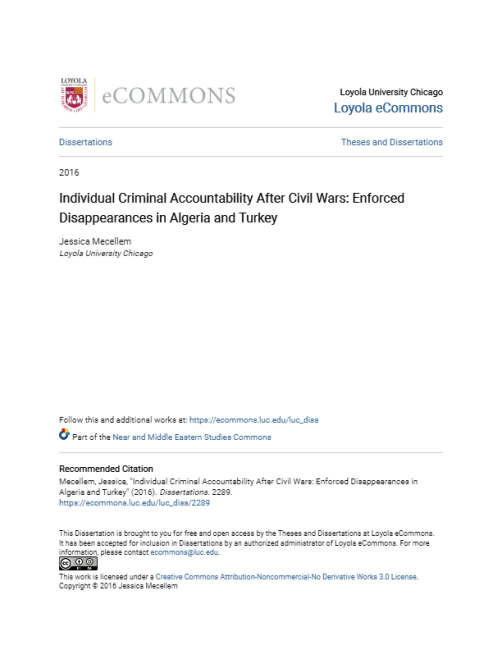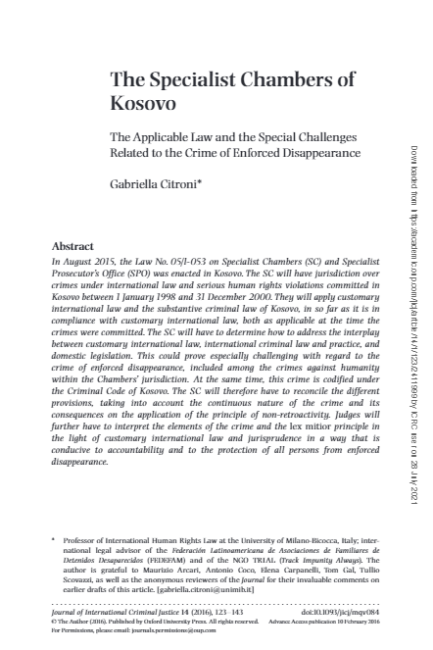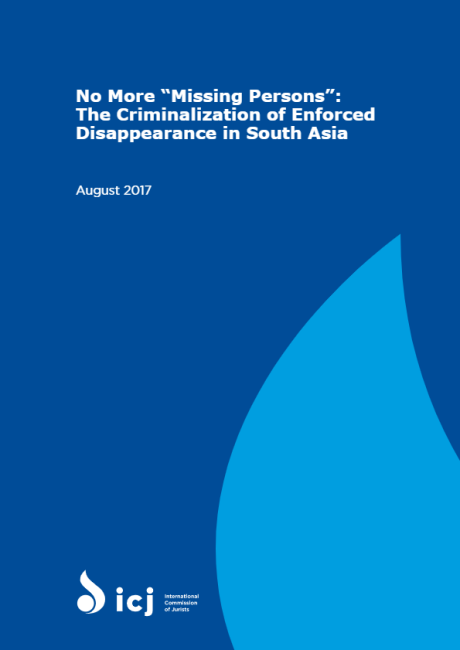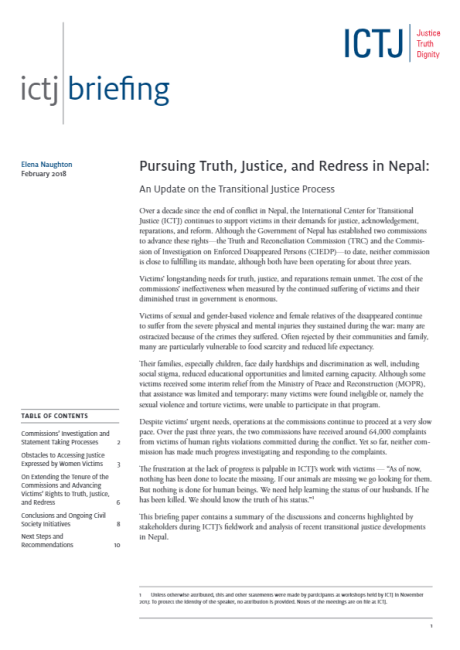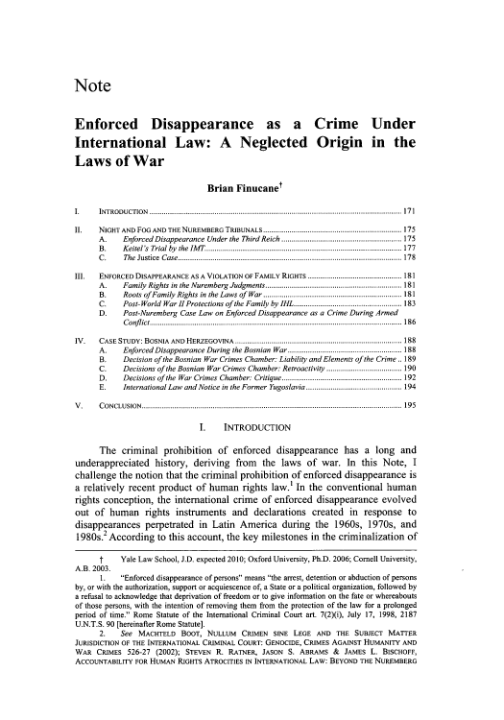
Enforced Disappearance as a Crime Under International Law: A Neglected Origin in the Laws of War
The criminal prohibition of enforced disappearance has a long and underappreciated history, deriving from the laws of war. In this Note, I challenge the notion that the criminal prohibition of enforced disappearance is a relatively recent product of human rights law. In the conventional human rights conception, the international crime of enforced disappearance evolved out of human rights instruments and declarations created in response to disappearances perpetrated in Latin America during the 1960s, 1970s, and 1980s. According to this account, the key milestones in the criminalization of the enforced disappearances are the 1992 Declaration on the Protection of All Persons from Enforced Disappearance, the 1994 Inter-American Convention on Forced Disappearance of Persons, and the 2006 International Convention for the Protection of All Persons from Enforced Disappearance. In fact, the delegations negotiating the Rome Statute of the International Criminal Court (ICC) were unaware of any prior precedent for the prosecution of enforced disappearance and were initially reluctant to include the offense as a crime against humanity, on par with murder, rape, and torture. This position is also articulated by Antonio Cassese, who argues that enforced disappearance was not criminal under customary international law (CIL) when the Statute of the ICC was enacted in 1998, but was rather a new crime representing "a nascent rule, evolved primarily out of treaty law."


